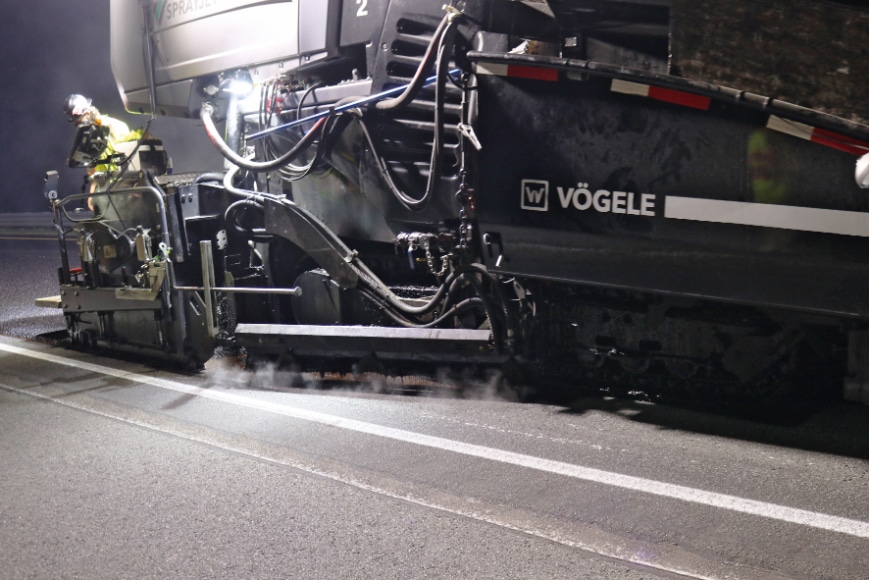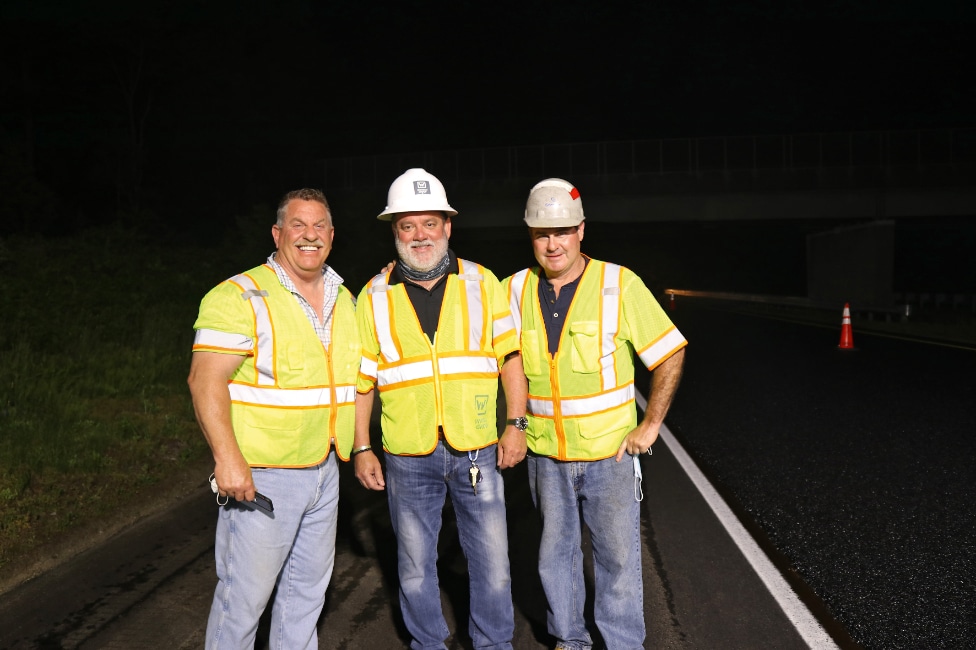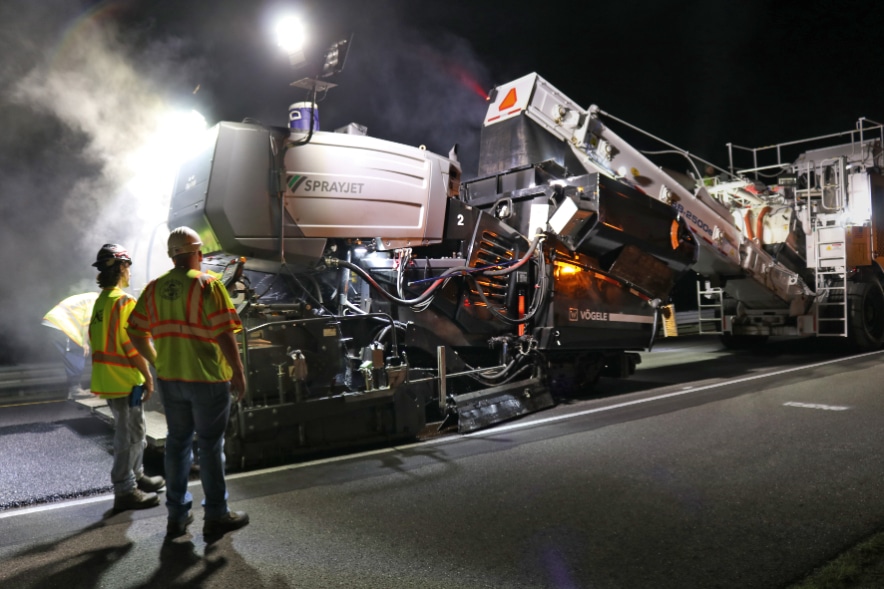APS Uses Vögele’s SprayJet Paver for Route 8 NJDOT Project
BY Matt Graves

During a night job on New Jersey’s Route 8, the crew at Asphalt Paving Systems Inc. (APS), was using their Vögele Super 1800-3i SprayJet paver and the VR 600 screed with rear-mounted extensions. The 19-mile section consisted of 7 miles of southbound lanes and 12 miles of northbound. Tom Zook, the New Jersey Department of Transportation (NJDOT) resident engineer on site stated that APS’ new SprayJet paver with an integral bond coat spray system was contracted to place polymer-modified ultrathin bonded overlay, 3/4-inches deep and 12 feet, 6 inches wide.
“The goal,” Zook said, “is to save state tax dollars by designating this project pavement preservation, which is funded by the federal government.”

“In my opinion there is no other machine on the market that will lay a thin overlay like the Vögele will, and I’ve had them all,” said Bobby Capoferri, Owner Asphalt Paving Systems Inc., pictured with Tom Zook of NJDOT (right) and David Salzmann of Wirtgen America (center). This photograph was taken in compliance with the Coronavirus rules in effect on-site at that time.
Unlike a traditional mill and fill job, pavement preservation is achieved by prolonging the life of the existing asphalt by applying a new ride course of ultrathin bonded overlay. This was just the second time APS had the opportunity to demonstrate this technology to NJDOT. “It is a process we could use more of,” Zook said.
Shooting polymer-modified emulsion at a rate of 0.23 pounds per square foot immediately prior to paving is designed to provide superior bonding of the overlay to the existing pavement without the mess of traditional tack methods. Zook commented that in his 13 years of experience, tack traditionally gets picked up by the material transfer vehicle, dump trucks and paver tracks right where the new asphalt bond is most important—the vehicle wheel path. It can also make a mess of the jobsite.
As the Vögele Super 1800-3i SprayJet paver moved down Route 8 at a consistent 57 feet per minute, the owner of APS, Bobby Capoferri stated, “In my opinion there is no other machine on the market that will lay a thin overlay like the Vögele will and I’ve had them all.” Starting in the Mid 1990s with NovaChip, Capoferri has a level of expertise that is rare in the roadbuilding industry. As a matter of fact, he owned the first purpose-built Vögele in the United States and now has three Super 1800-3i SprayJet pavers to cover the 11 states where his company is DOT-certified.
Vögele Super 1800-3i SprayJet Offers Ultrathin Bonded Overlay Options
The Vögele Super 1800-3i SprayJet has five spray bars with a total of 24 spray nozzles spaced 10 inches apart with a 120° spray cone. Depending on the type of emulsion and nozzle size, the rate of spread can be varied between 0.06 pounds per square foot to 0.33 pounds per square foot. All the paver operator has to do is set the required quantity before spraying starts. The nozzles operate in pulsed mode rather than continuously. This, combined with the low spraying pressure of 43.5-psi, means that misting is almost completely prevented. Vögele technology, according to Capoferri, “allows us to take a road that was so-so and you can come up with something better.”

Here the Super 1800-3i SprayJet paver with spray assembly for bitumen emulsion paves a thin surface layer “hot on hot” on top of sealer. With the extra tank, a total of 1,875 gallons of bitumen emulsion are available for spraying.
Two Steps to the SprayJet
Step 1. Using polymer-modified emulsion from the onboard tank, a computer-controlled spray system built into the Vögele Super 1800-3i SprayJet sprays a bond coat over a width up to 19 feet, 8 inches directly in front of the ultrathin bonded overlay. In addition to bonding the new open graded surface mix and existing asphalt road together, the emulsion creates a water barrier membrane, preventing water from wicking up through the pavement, causing freeze/thaw fractures.
Asphalt Pavement Systems Inc. Manages Multiple Paving Techniques in a Day
Step 2. On top of this bond coat, the paver immediately places a polymer-modified, open-graded surface mix—fed by truck or material transfer vehicle—that cures very rapidly as it is compacted by a static roller. The resulting ultrathin lift optimizes water penetration to improve vehicle traction, while mitigating tire noise and back spray. The one-pass construction process moves quickly, minimizing the time necessary for lane closure and inconvenience to the traveling public. It also reduces the time crews are exposed to dangerous vehicle traffic.
